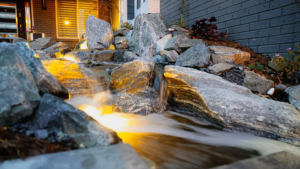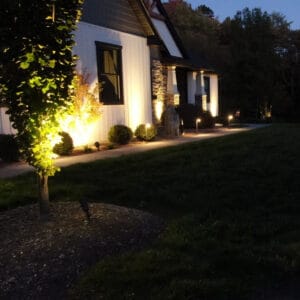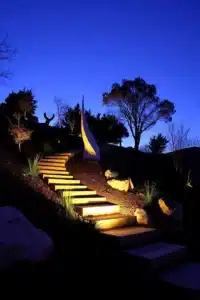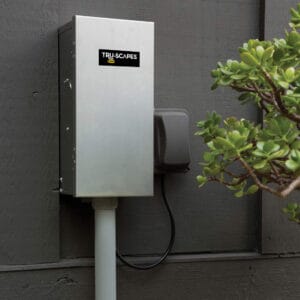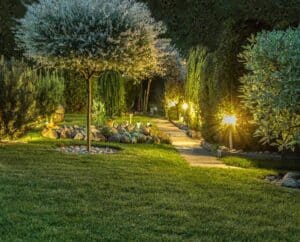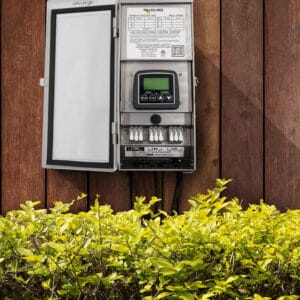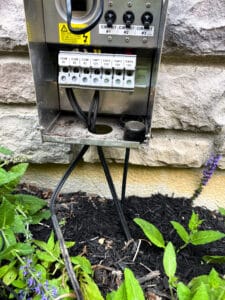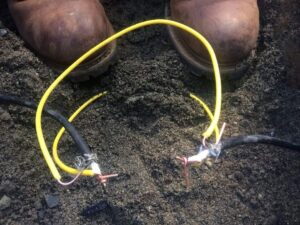Have you ever driven past a home at night and been captivated by its beautifully lit exterior? It’s not just about placing a few lights in the yard. The secret to a truly stunning outdoor lighting design lies in a professional technique: creating landscape lighting zones. This approach, central to a professional lighting design, allows you to build layers of light, adding depth, dimension, and a touch of magic to your property.
If you’re ready to move beyond basic, one-dimensional lighting, you’re in the right place. This guide will walk you through the art and science of landscape lighting zones, showing you how to transform your outdoor space into a breathtaking evening retreat. We’ll explore how to use layered outdoor lighting to highlight your home’s best features, improve safety, and create inviting social areas.
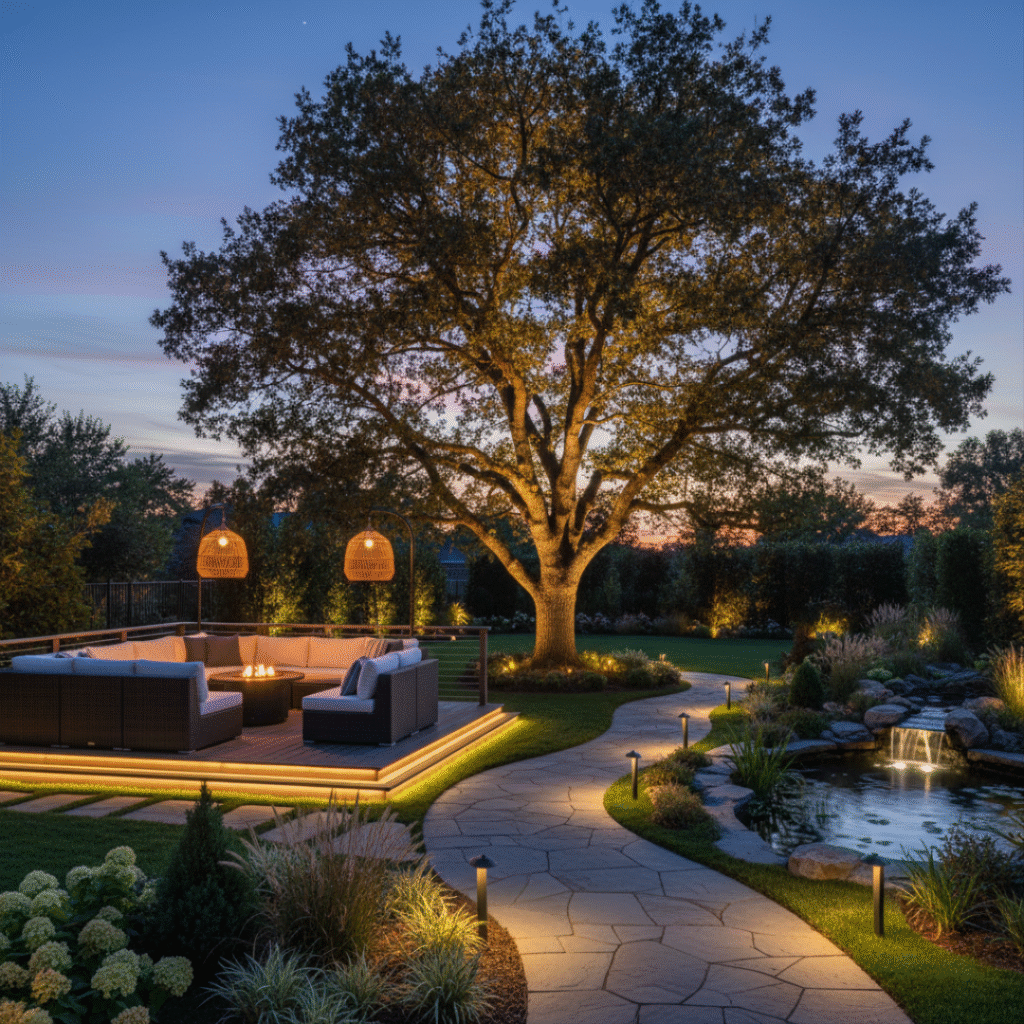
What Are Landscape Lighting Zones?
Think of your property as a blank canvas and lights as your paintbrushes. Instead of trying to paint the entire canvas with a single brushstroke, you’d use different brushes and techniques for different areas. That’s the core idea behind lighting design zones.
Landscape lighting zones are distinct areas of your property, each with a specific lighting purpose. By treating your front yard, backyard, garden, and architectural features as individual zones, you can apply unique lighting strategies to each one. This method of multi-zone illumination creates a cohesive, visually interesting, and highly functional lighting scheme. It’s the difference between a flat, washed-out yard and a dynamic, multi-layered landscape.
The Power of Layered Outdoor Lighting
Why bother with creating different zones? Because a single, uniform layer of light rarely does a property justice. It can flatten architectural details and leave beautiful landscaping hidden in the shadows. Layered outdoor lighting, on the other hand, offers a host of benefits:
- Creates Visual Interest and Depth: By layering different types of light at various heights and intensities, you create a rich visual tapestry. It adds a three-dimensional quality to your landscape that you just can’t get from a single floodlight.
- Highlights Key Features: Got a stunning oak tree, a beautiful stone facade, or an elegant water feature? Lighting zones allow you to put a spotlight on these elements, turning them into dramatic focal points after dark. Explore these stunning landscape lighting ideas for inspiration.
- Enhances Ambiance and Mood: You can tailor the lighting in each zone to create a specific mood. Bright, welcoming light for your entryway, soft, romantic light for a seating area, and subtle, dramatic light for architectural features.
- Improves Safety and Security: Well-lit pathways, steps, and entryways are essential for preventing trips and falls. A well-planned design not only looks great, but also enhances safety and security, deterring potential intruders.
- Increases Usability: Your outdoor spaces shouldn’t be off-limits when the sun goes down. Proper lighting in social zones like patios, decks, and poolsides extends their usability, allowing you to entertain or relax outdoors long into the evening.
Designing Your Landscape Lighting Zones
Ready to start planning? The best way to approach multi-zone illumination is to walk your property and identify the key areas you want to light. Here are the most common lighting design zones to consider:
1. Architectural and Foundation Zone
This zone focuses on your home itself. The goal here is to highlight its architectural beauty and create a warm, welcoming facade.
- What to Light: Columns, archways, textured surfaces (like brick or stone), and the roofline.
- Techniques: Use proper uplighting techniques to cast dramatic shadows on textured walls. Grazing, a technique where you place lights close to the surface, is perfect for this. Wall washing provides a more even, gentle illumination.
- Fixtures to Use: Well lights, spotlights, and wall wash fixtures.
2. Pathway and Walkway Zone
Safety is the primary concern here, but that doesn’t mean you have to sacrifice style. The key is to provide enough light to see where you’re going without creating glare.
- What to Light: Front walkways, garden paths, and steps.
- Techniques: Space lights evenly along the path to create pools of light that guide the way. Avoid a “runway” effect by staggering the lights on either side of the path.
- Fixtures to Use: Path lights and downlights mounted on trees or structures.
3. Garden and Landscape Zone
This is where you can get really creative. This zone is all about showcasing the beauty of your plants, trees, and other landscape features.
- What to Light: Specimen trees, flower beds, shrubs, and garden statues.
- Techniques: Uplighting a tree from its base creates a dramatic effect. Moonlighting, where you place a light high up in a tree and cast it down, mimics the natural light of the moon.
- Fixtures to Use: Spotlights, garden lights, and well lights.
4. Social and Entertainment Zone
These are the areas where you gather with family and friends. The lighting should be comfortable, inviting, and functional.
- What to Light: Patios, decks, outdoor kitchens, and seating areas.
- Techniques: Focus on indirect lighting to avoid harsh glare. Downlighting from a pergola or the eaves of your house can provide excellent ambient light. Hardscape lights can be built into seating walls or under capstones. Check out these deck and patio lighting ideas for more inspiration.
- Fixtures to Use: Downlights, hardscape lights, and string lights (for a festive touch).
Choosing the Right Tools for the Job
Selecting the right fixtures for each zone is crucial for achieving a professional look. Here’s a quick comparison of some popular low-voltage LED fixtures, which are often recommended for their efficiency and long lifespan. According to the U.S. Department of Energy, there are many benefits of LED lighting, including significant energy savings.
| Fixture Type | Best For | Lighting Effect |
| Spotlights | Highlighting trees, architectural details, and statues. | A focused, narrow beam of light. |
| Floodlights | Illuminating large areas like driveways or wide trees. | A wider beam of light for broad coverage. |
| Path Lights | Lighting walkways, steps, and small garden beds. | A gentle pool of light directed downward. |
| Well Lights | Uplighting trees, columns, and walls from the ground. | A discreet, powerful upward beam. |
| Hardscape Lights | Built-in lighting for walls, steps, and railings. | A subtle, low-profile glow. |
Putting It All Together: A Cohesive Design
The final step is to ensure all your landscape lighting zones work together harmoniously. The goal isn’t to have isolated pockets of light, but a seamlessly integrated system. Think about how the light from one zone transitions into the next. Use a consistent color temperature—you can learn more from our guide to color temperature—to unify the design.
Don’t be afraid to experiment. One of the benefits of a low-voltage system is that you can often adjust fixtures and placements until you get the look just right.
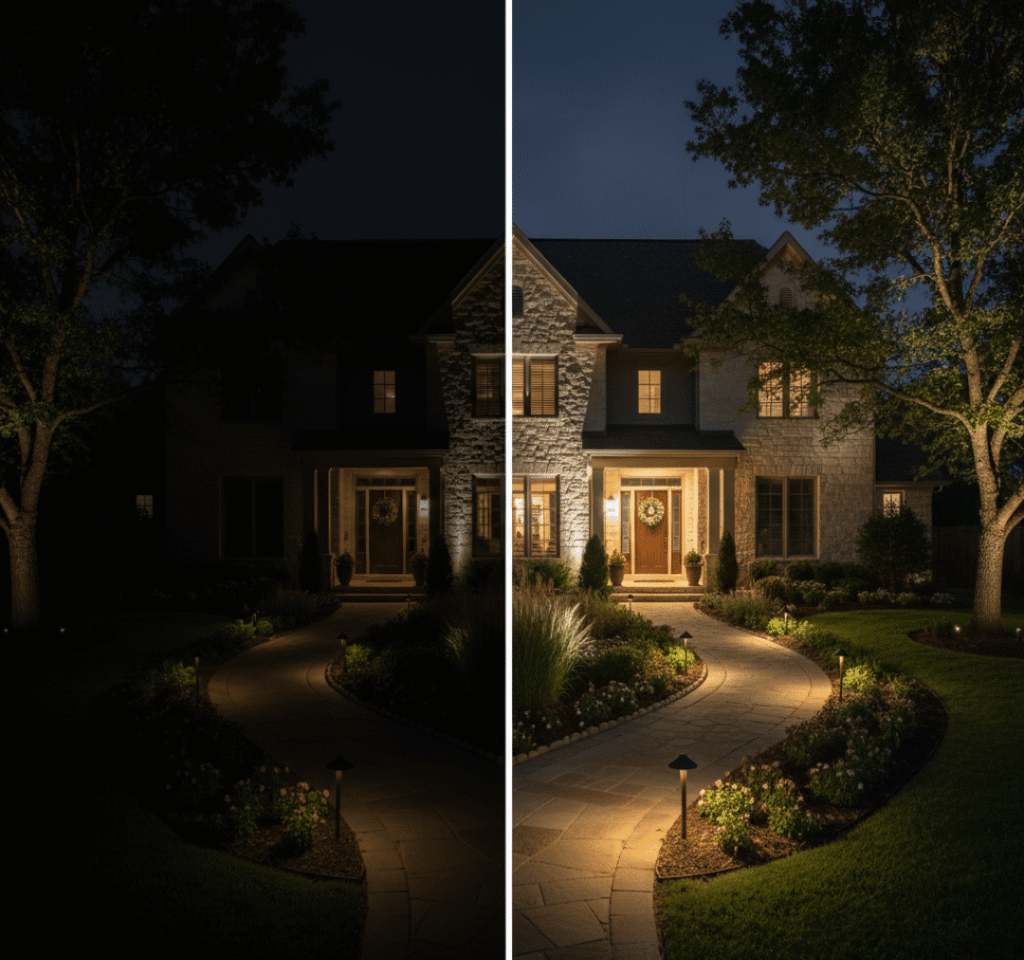
Light Up Your Nights
Creating landscape lighting zones is a game-changer for your home’s curb appeal and functionality. By thinking in layers and focusing on specific areas, you can craft a stunning, professional-quality lighting design that you’ll enjoy for years to come. Following design principles from organizations like the Illuminating Engineering Society (IES) can ensure your lighting is both beautiful and effective.
Ready to bring your outdoor space to life after dark? Take these ideas and start planning your own multi-zone illumination project. For the best results, consider working with a certified professional from the leading industry association. We’d love to hear about your plans in the comments below!

